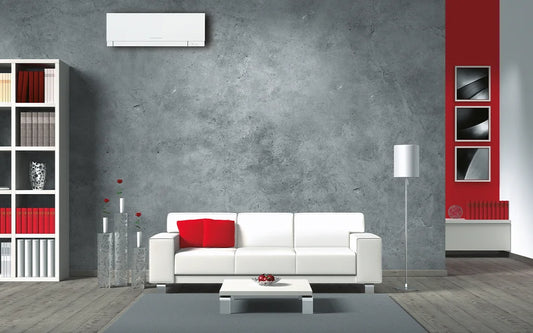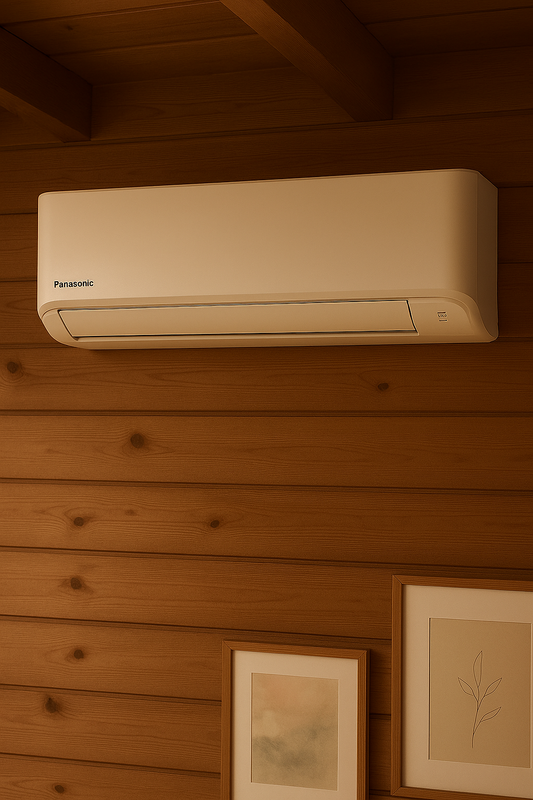Installationsanvisning Luftvärmepump
Inledning
En luftvärmepump är en energieffektiv och miljövänlig lösning för att reglera temperaturen i en bostad eller kommersiell fastighet. Att följa en korrekt installationsanvisning är avgörande för att säkerställa optimal prestanda och långsiktig hållbarhet.
Definition och Bakgrund
En luftvärmepump är en apparat som överför värmeenergi mellan inomhus- och utomhusmiljön. Genom att utnyttja principer för värmepumpsteknik kan den både kyla och värma en byggnad beroende på behov. Genom att dra nytta av den naturliga värmen i utomhusluften kan luftvärmepumpen effektivt reglera inomhustemperaturen.
Fördelar och användningsområden
Luftvärmepumpar erbjuder flera fördelar, inklusive energieffektivitet, lägre energikostnader och minskade utsläpp av växthusgaser. Dessa system kan användas i både bostäder och kommersiella fastigheter och passar särskilt bra i områden med måttliga klimatförhållanden.
Relaterade tekniker, begrepp eller variationer
Det finns olika typer av luftvärmepumpar, inklusive luft-luft, luft-vatten och luft-avledningssystem. Dessa varianter har olika installationsspecifikationer och användningsområden, vilket bör beaktas vid val av lämplig luftvärmepump.
Vanliga frågor (FAQ)
-
Hur lång tid tar installationen av en luftvärmepump?
Installationstiden kan variera beroende på faktorer som byggnadens storlek, vald luftvärmepumpsmodell och eventuella förberedande arbeten. Generellt sett kan installationen ta från några timmar till flera dagar.
-
Krävs det professionell hjälp för att installera en luftvärmepump?
Det rekommenderas starkt att anlita en certifierad installatör med erfarenhet av luftvärmepumpar för att säkerställa korrekt installation och garantera att garantin förblir giltig.
-
Vilken typ av underhåll kräver en luftvärmepump?
Regelbunden rengöring av filter och kontroller av systemets prestanda rekommenderas för att säkerställa optimal funktion och lång livslängd.
Sammanfattning
Att följa en noggrant utformad installationsanvisning är av yttersta vikt för att säkerställa att en luftvärmepump fungerar effektivt och pålitligt. Genom att förstå tekniken bakom luftvärmepumpar, deras fördelar och korrekt installationspraxis kan man maximera nyttan av denna miljövänliga uppvärmnings- och kylningsteknik.
Installation Steps
Below are the general steps to follow when installing an air source heat pump:
- Choose an appropriate outdoor location for the heat pump unit.
- Install the outdoor unit on a stable and level surface, ensuring proper clearance for airflow.
- Position the indoor unit in a suitable location within the building, considering factors such as air circulation and accessibility for maintenance.
- Connect the indoor and outdoor units using refrigerant lines and electrical wiring, following manufacturer guidelines.
- Test the system to ensure proper functionality and performance.
Installation Considerations
When installing an air source heat pump, several factors should be taken into account:
- Insulation levels and building materials of the property
- Orientation and layout of the property
- Local climate and environmental conditions
- Applicable building regulations and codes
Energy Efficiency and Cost Savings
By utilizing the ambient heat from the outdoor air, air source heat pumps can provide efficient heating and cooling, resulting in potential energy savings for homeowners and businesses. When properly installed and maintained, these systems can contribute to reduced energy consumption and lower utility bills.
Case Study: Residential Installation
In a residential setting, the installation of an air source heat pump resulted in a 30% reduction in heating costs during the winter months. Additionally, the cooling capabilities of the heat pump led to improved comfort during summer, showcasing the versatility of the technology.
Environmental Impact
Compared to traditional heating and cooling methods, air source heat pumps offer a more environmentally friendly alternative by utilizing renewable heat sources. This can contribute to a reduction in carbon emissions and overall environmental impact, aligning with sustainability goals.
Conclusion
Proper installation and understanding of the operational principles of air source heat pumps are essential for maximizing their benefits. By considering various installation factors, energy efficiency, and environmental implications, stakeholders can make informed decisions regarding the implementation of this innovative heating and cooling technology.
Installation Maintenance
Regular maintenance of the air source heat pump is crucial to ensure optimal performance and longevity. This may include:
- Inspecting and cleaning the outdoor unit to remove debris and ensure unobstructed airflow.
- Checking refrigerant levels and ensuring proper pressure for efficient operation.
- Inspecting and cleaning indoor air filters to maintain air quality and system efficiency.
- Periodic inspection of electrical connections and components for safety and reliability.
Regulatory Compliance
Installers and property owners should adhere to local regulations and guidelines pertaining to the installation of air source heat pumps. Compliance with relevant standards and requirements ensures the safety, efficiency, and legal operation of the system.
Remote Control and Monitoring
Many modern air source heat pump models offer remote control and monitoring capabilities. This allows users to adjust settings, monitor energy usage, and receive maintenance alerts through smartphone apps or web interfaces, enhancing convenience and system oversight.
Financial Incentives
In some regions, financial incentives or rebates may be available for the installation of energy-efficient heating and cooling systems, including air source heat pumps. Exploring available incentives can provide cost-saving opportunities for property owners.
Noise Considerations
During installation, attention should be given to the placement of the outdoor unit to minimize potential noise disturbances. Proper positioning and sound-dampening measures can contribute to a more peaceful indoor and outdoor environment.
Long-Term Performance Monitoring
After installation, monitoring the long-term performance of the air source heat pump is important. Tracking energy consumption, system efficiency, and conducting periodic inspections can help identify any potential issues and ensure continued optimal operation.
Installation Tips
Consider the following tips for a successful air source heat pump installation:
- Ensure proper sizing of the heat pump based on the heating and cooling requirements of the property.
- Verify the compatibility of the heat pump with existing HVAC systems or supplementary heating methods.
- Coordinate with an electrician to establish the necessary power supply for the heat pump unit.
- Conduct a thorough site survey to assess potential obstructions and environmental factors affecting installation.
Warranty and Service Contracts
Exploring warranty options and service contracts with manufacturers or authorized dealers can provide added protection and maintenance support for the air source heat pump system. Understanding the terms and coverage of warranties is essential for long-term peace of mind.
Zoning and Control Systems
For larger properties or multi-zone heating and cooling requirements, consider integrating zoning and control systems to optimize the functionality and energy efficiency of the air source heat pump. This allows for personalized temperature control in different areas of the building.
Backup Heating Arrangements
In regions experiencing extremely low temperatures, it may be beneficial to have backup heating arrangements in place to supplement the heat pump's performance during peak demand or severe weather conditions. Options such as electric resistance heating or hydronic systems can provide additional support.
Adapting to Smart Homes
With the rise of smart home technology, integrating air source heat pumps with smart thermostats and home automation systems can enhance convenience, energy management, and connectivity. Explore compatibility options for seamless integration.
Training and User Guidance
Providing training and user guidance for occupants or property owners on the operation and maintenance of the air source heat pump system can promote efficient usage and proactive care. Clear instructions and educational resources contribute to overall system performance.



